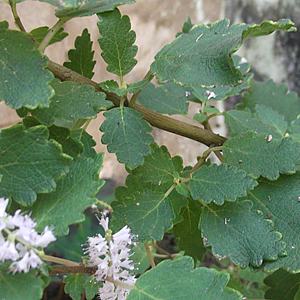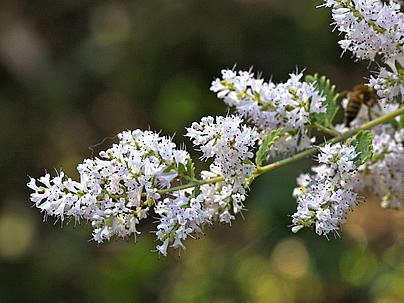The Misty Plume Bush (Tetradenia riparia) is a dioecious, highly floriferous shrub species native to South Africa and cultivated in subtropical to temperate climate areas around the world for its ornamental and medicinal qualities. The branches grow irregularly with thin, smooth, brown-colored stems. Its leaves are thick, oval to heart-shaped, pubescent, light green in color, with serrated margins and a strong aromatic fragrance.
Inflorescences appear in winter in dense terminal spikes, with small flowers, usually white but can acquire shades of pink or lilac. Male plants produce looser inflorescences with a delicate appearance, while females have compact forms for various landscaping effects. The flowers are fragrant and attract pollinating insects.

The effect of the flowering Misty Plume Bush is quite striking and often stands out even more because few other plants will be in bloom at the same time. Therefore, it easily becomes the center of attention in the garden, without competition. Take advantage of this characteristic and plant it individually in areas of interest or create masses or rows with this species.
Its use in rocky gardens or xeriscape-type (low-water-use gardens) can be very relevant, breaking the monotony and offering seasonal variation to the garden. Also, consider using it in herb and medicinal gardens.
The Misty Plume Bush should be grown in full sun or partial shade, in fertile, well-drained soil enriched with organic matter and regularly irrigated during the first year of establishment. It does not tolerate waterlogged soils, to which it is very sensitive. It prefers drier soils, especially in winter when it responds with intense flowering.
Locations with cold and rainy winters are not suitable for planting it, just as it does not bloom in permanently hot areas. It requires distinct seasons to flower. Low maintenance, it is advisable to fertilize it before the flowering period and carry out formative and foliage renewal pruning after flowering. Take the opportunity to take cuttings from the branches, which root easily. Tetradenia riparia grows rapidly and can bloom as early as the first year of establishment.


